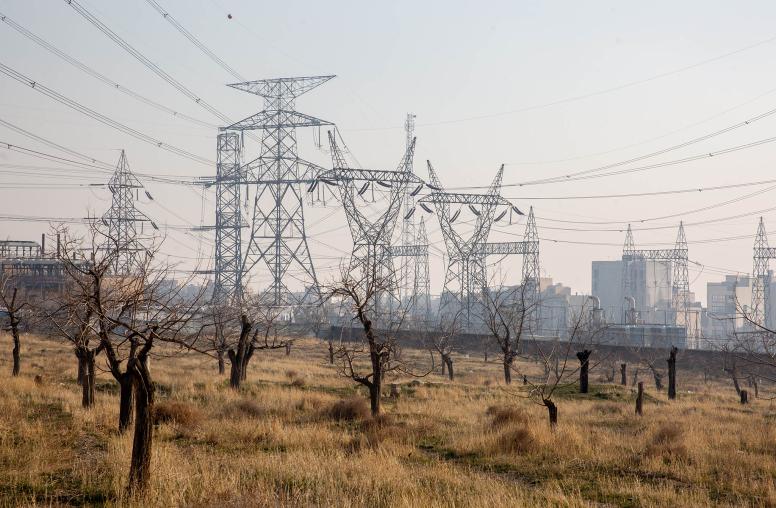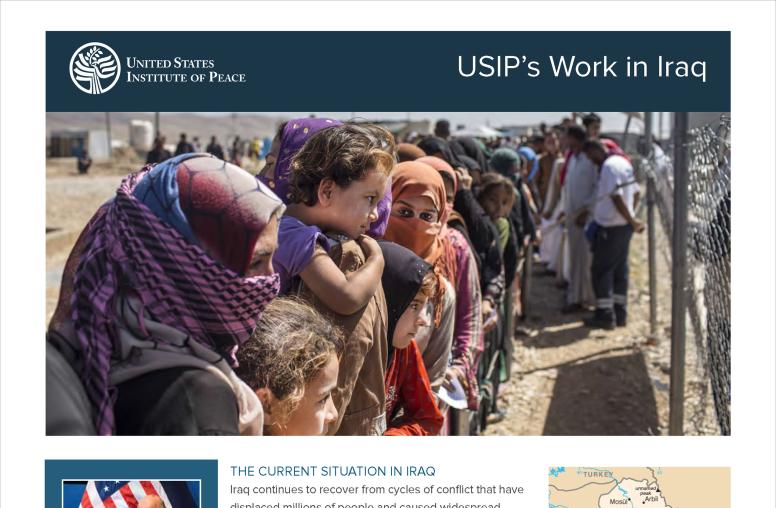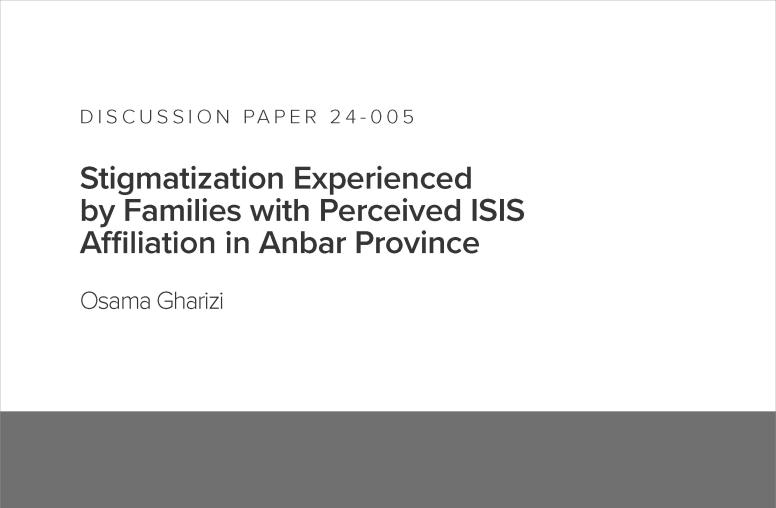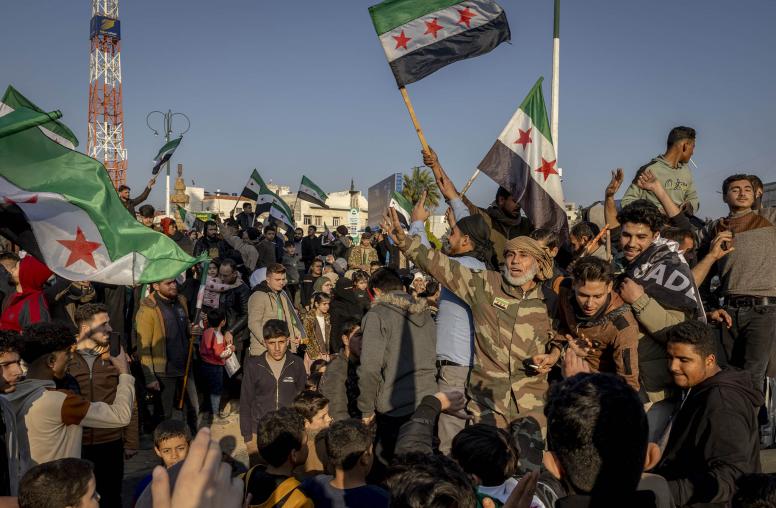Struggle for Sinjar: Iraqis’ Views on Governance in the Disputed District
The Sinjar agreement highlights a key lesson: community inclusion is crucial if the deal is to reflect communities’ needs.
Editor’s Note: This is Part 2 of a two-part series on the October 2020 Sinjar agreement and its communities’ perceptions of security and governance in the district. Part 1 of this series provided a historical overview of the district and explored the views of its communities on security issues.
Iraq’s Sinjar district and its communities have struggled to recover from the recent conflict against the Islamic State group (ISIS). This is due in large part to the fact that the district is one of 14 territories under dispute between Iraq’s federal government and the Kurdistan Regional Government (KRG). As a result, Sinjar has become an arena for competition between the federal government, KRG and other actors in the post-ISIS period. This reality has led to frustration, anger and disillusionment among the communities in Sinjar, the majority of whom are Yazidi (Ezidi).

Along with the Government of Iraq (GoI) and the KRG, actors aligned with the Popular Mobilization Forces (PMF) and the Kurdistan Worker’s Party (PKK), among others, are also part of this competition for control of Sinjar. There is a multitude of security actors aligned with these sides along with two competing administrative units attempting to govern the district, one aligned to the PMF and the other to the KRG. In October 2020, the GoI and KRG reached an agreement to help address the security and administrative challenges facing the district.
Recent findings from USIP’s Conflict and Stabilization Monitoring Framework (CSMF) highlight that the Sinjar agreement, if implemented, may indeed help address some community concerns around security and governance.
Administration
The agreement’s attempt to unify and depoliticize the district’s governing body would undoubtedly be a needed step toward improving governance in the district, especially as nearly two-thirds of Sinjar’s residents have either little (33%) or no confidence (35%) in the current administration of the district. (This question did not specify which administration. Instead, it provides a general view toward the administrative arrangement of the district.) Even so, other views highlighted by the CSMF show that much more beyond this step will need to be done if governance is to improve. The lack of essential services (water, electricity, etc.) in the district is one particular challenge that transcends the mere formation of a non-politicized local administration: The majority of the district’s residents indicate that their essential service needs are either “not very well met” (45%) or “completely unmet” (15%). And to the extent that these services exist, residents of the sub-districts of Sinjar Center and Sinuni, regardless of ethno-sectarian identity, overwhelmingly feel they are not provided equally. Partly because of this perception, the vast majority of residents (76%) feel the state is absent in the district and that they have to rely on other actors for their governing needs.
That the sense of state absence coincides with negative feelings toward political institutions and actors should not come as a surprise. Seventy percent of respondents state that they are marginalized in the district, with the central government (58%), local authorities (47%) and political leaders/parties (38%) ranked as the top three entities most responsible for the feeling of neglect. At the same time, the majority of Sinjar residents feel that their political leaders are driven mainly by personal gain, with only 16 percent indicating that politicians are trying to make their community a better place to live.
Poor governance and ineffective political representation seem to have impacted the view that elections can induce positive change — over 60 percent state that they have either no or a little confidence — as well as the view that political representation and civilian leadership can be a means for advancing interests and needs of the electorate. On the latter, the majority of residents in the district cite international backing (56%), financial resources (45%) and an armed group (19%) as the top three ways to advance political interests and objectives in the district.
The Sinjar Agreement: Opportunities and Limitations
The above findings illustrate the opportunities presented by the agreement as well as its limitations. On security (for more, see Part 1), the agreement does attempt to address two key needs and demands of the district’s communities. The first is that it attempts to reconfigure the security apparatus so that the local police assume a more active role, something that is in line with community perceptions and demands. Second, the pact’s stipulation that all forces apart from the local police and intelligence services linked to the GoI be removed from the district might go a long way in mitigating citizen fears over potential clashes between security groups in their area. If these points are indeed successfully implemented — and in a way that make the local police inclusive of all communities and political streams — then they might work to enhance stability in the district.
Yet these points are undermined to a degree by the agreement’s very nature: in targeting the PMF, PKK and affiliated armed groups, the agreement risks heightening tensions and conflict with these groups, which were not included in the negotiations that produced the agreement. Hence the paradox of the agreement is that it is one between two actors (GoI and KRG) competing for control of the district with other political and military entities outside of their authority. This major limitation might actually engender more tension and conflict, rather than allay them.
Regarding administration, the agreement rightfully attempts to overcome a major stumbling block to improving governance — the dual administrations — while also attempting to make the administrative council more representative of the ethno-political communities residing in the district. Though these points speak to the concerns of Sinjar’s communities, they are on their own insufficient to solving governance challenges.
This is due in part to how governance is exercised throughout Iraq. In the post-2003 period, Iraq’s political system — through Law 21 of 2008 — has attempted to gradually decentralize political, fiscal and administrative power away from the central government and to provincial and local authorities. Yet despite the legal framework, the decentralization of these functions has been hampered by several constraints, including capacity issues on the local level, resistance to decentralization from central-level political actors and bureaucrats, competition with informal governing actors and patronage systems, and elite capture of provincial and district councils. As a result, provincial- and district-level administrative institutions have come to lack community legitimacy, and the needed resources and agency to respond to the needs of their constituents in the district.
Given that Sinjar district suffers from many of the governance characteristics listed above, simply establishing a new administrative council without tackling other factors impeding governance will likely do little to improve outcomes in the district. Recognizing this, many from within the Yazidi community have called for Sinjar to be made its own province, a move that could in theory help overcome some of the challenges related to resource allocation, representation and agency. If Sinjar became its own province, then it would have a federally allotted budget more reflective of the area’s needs and a governor and other political authorities beholden to its communities’ interests as opposed to that of political actors aligned with the GoI or KRG. Regardless of whether or not such a proposal is politically viable, it reflects a profound sense of urgency among the Yazidi community to find a more inclusive, responsive and sustainable solution to the district’s current predicament.
As of April 2021, little progress has been made in the implementation of the Sinjar agreement. Indeed, PKK-aligned groups and their supporters have been actively resisting the implementation of the agreement. CSMF data shows that more will need to be done to fully address security and governance needs, including tackling tensions among and between communities in the district, something that the current agreement completely eschews despite it being a major concern among district residents. Taking tangible steps to implement the agreement and working on amending it so that it includes other concerns like community tensions — and the inclusion of political groups who are deemed to have support among some segments of the community — would go a long way in helping to stabilize and develop a district long neglected and caught in the middle of the dispute between Baghdad and Erbil.
Community Inclusion is Critical
Without the full implementation of Article 140 of the Iraqi constitution — which lays out mechanisms to resolve the status of disputed districts — it is likely that similar types of agreements between Baghdad and Erbil will be needed in other disputed territories. The Sinjar agreement highlights a key lesson for such efforts to consider: Community inclusion and engagement is crucial if the agreement is to properly reflect the issues, positions and needs of all groups. Limiting the agreement to the points of contention between the respective governments will risk alienating key community leaders and other political groups who hold sway with portions of the community, thereby undermining the legitimacy of any agreement reached. Though a negotiation process that incorporates all segments and voices from a district might be unwieldy, a process with a strong consultation mechanism with these groups would be more manageable and help allay any concerns over exclusion from the process.




